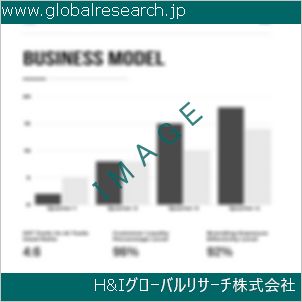1 Report Overview
1.1 Study Scope
1.2 Market Analysis by Type
1.2.1 Global Agriculture Microbiome Market Size Growth Rate by Type: 2018 VS 2022 VS 2029
1.2.2 Bacteria
1.2.3 Fungi
1.2.4 Virus
1.2.5 Other
1.3 Market by Application
1.3.1 Global Agriculture Microbiome Market Growth by Application: 2018 VS 2022 VS 2029
1.3.2 Cereals
1.3.3 Oilseeds & Pulses
1.3.4 Fruits & Vegetables
1.3.5 Other
1.4 Study Objectives
1.5 Years Considered
1.6 Years Considered
2 Global Growth Trends
2.1 Global Agriculture Microbiome Market Perspective (2018-2029)
2.2 Agriculture Microbiome Growth Trends by Region
2.2.1 Global Agriculture Microbiome Market Size by Region: 2018 VS 2022 VS 2029
2.2.2 Agriculture Microbiome Historic Market Size by Region (2018-2023)
2.2.3 Agriculture Microbiome Forecasted Market Size by Region (2024-2029)
2.3 Agriculture Microbiome Market Dynamics
2.3.1 Agriculture Microbiome Industry Trends
2.3.2 Agriculture Microbiome Market Drivers
2.3.3 Agriculture Microbiome Market Challenges
2.3.4 Agriculture Microbiome Market Restraints
3 Competition Landscape by Key Players
3.1 Global Top Agriculture Microbiome Players by Revenue
3.1.1 Global Top Agriculture Microbiome Players by Revenue (2018-2023)
3.1.2 Global Agriculture Microbiome Revenue Market Share by Players (2018-2023)
3.2 Global Agriculture Microbiome Market Share by Company Type (Tier 1, Tier 2, and Tier 3)
3.3 Players Covered: Ranking by Agriculture Microbiome Revenue
3.4 Global Agriculture Microbiome Market Concentration Ratio
3.4.1 Global Agriculture Microbiome Market Concentration Ratio (CR5 and HHI)
3.4.2 Global Top 10 and Top 5 Companies by Agriculture Microbiome Revenue in 2022
3.5 Agriculture Microbiome Key Players Head office and Area Served
3.6 Key Players Agriculture Microbiome Product Solution and Service
3.7 Date of Enter into Agriculture Microbiome Market
3.8 Mergers & Acquisitions, Expansion Plans
4 Agriculture Microbiome Breakdown Data by Type
4.1 Global Agriculture Microbiome Historic Market Size by Type (2018-2023)
4.2 Global Agriculture Microbiome Forecasted Market Size by Type (2024-2029)
5 Agriculture Microbiome Breakdown Data by Application
5.1 Global Agriculture Microbiome Historic Market Size by Application (2018-2023)
5.2 Global Agriculture Microbiome Forecasted Market Size by Application (2024-2029)
6 North America
6.1 North America Agriculture Microbiome Market Size (2018-2029)
6.2 North America Agriculture Microbiome Market Growth Rate by Country: 2018 VS 2022 VS 2029
6.3 North America Agriculture Microbiome Market Size by Country (2018-2023)
6.4 North America Agriculture Microbiome Market Size by Country (2024-2029)
6.5 United States
6.6 Canada
7 Europe
7.1 Europe Agriculture Microbiome Market Size (2018-2029)
7.2 Europe Agriculture Microbiome Market Growth Rate by Country: 2018 VS 2022 VS 2029
7.3 Europe Agriculture Microbiome Market Size by Country (2018-2023)
7.4 Europe Agriculture Microbiome Market Size by Country (2024-2029)
7.5 Germany
7.6 France
7.7 U.K.
7.8 Italy
7.9 Russia
7.10 Nordic Countries
8 Asia-Pacific
8.1 Asia-Pacific Agriculture Microbiome Market Size (2018-2029)
8.2 Asia-Pacific Agriculture Microbiome Market Growth Rate by Region: 2018 VS 2022 VS 2029
8.3 Asia-Pacific Agriculture Microbiome Market Size by Region (2018-2023)
8.4 Asia-Pacific Agriculture Microbiome Market Size by Region (2024-2029)
8.5 China
8.6 Japan
8.7 South Korea
8.8 Southeast Asia
8.9 India
8.10 Australia
9 Latin America
9.1 Latin America Agriculture Microbiome Market Size (2018-2029)
9.2 Latin America Agriculture Microbiome Market Growth Rate by Country: 2018 VS 2022 VS 2029
9.3 Latin America Agriculture Microbiome Market Size by Country (2018-2023)
9.4 Latin America Agriculture Microbiome Market Size by Country (2024-2029)
9.5 Mexico
9.6 Brazil
10 Middle East & Africa
10.1 Middle East & Africa Agriculture Microbiome Market Size (2018-2029)
10.2 Middle East & Africa Agriculture Microbiome Market Growth Rate by Country: 2018 VS 2022 VS 2029
10.3 Middle East & Africa Agriculture Microbiome Market Size by Country (2018-2023)
10.4 Middle East & Africa Agriculture Microbiome Market Size by Country (2024-2029)
10.5 Turkey
10.6 Saudi Arabia
10.7 UAE
11 Key Players Profiles
11.1 BASF SE
11.1.1 BASF SE Company Detail
11.1.2 BASF SE Business Overview
11.1.3 BASF SE Agriculture Microbiome Introduction
11.1.4 BASF SE Revenue in Agriculture Microbiome Business (2018-2023)
11.1.5 BASF SE Recent Development
11.2 Certis USA LLC
11.2.1 Certis USA LLC Company Detail
11.2.2 Certis USA LLC Business Overview
11.2.3 Certis USA LLC Agriculture Microbiome Introduction
11.2.4 Certis USA LLC Revenue in Agriculture Microbiome Business (2018-2023)
11.2.5 Certis USA LLC Recent Development
11.3 Bayer Cropscience AG
11.3.1 Bayer Cropscience AG Company Detail
11.3.2 Bayer Cropscience AG Business Overview
11.3.3 Bayer Cropscience AG Agriculture Microbiome Introduction
11.3.4 Bayer Cropscience AG Revenue in Agriculture Microbiome Business (2018-2023)
11.3.5 Bayer Cropscience AG Recent Development
11.4 Marrone Bio Innovations Inc
11.4.1 Marrone Bio Innovations Inc Company Detail
11.4.2 Marrone Bio Innovations Inc Business Overview
11.4.3 Marrone Bio Innovations Inc Agriculture Microbiome Introduction
11.4.4 Marrone Bio Innovations Inc Revenue in Agriculture Microbiome Business (2018-2023)
11.4.5 Marrone Bio Innovations Inc Recent Development
11.5 Sumitomo Chemical (Valent Biosciences LLC)
11.5.1 Sumitomo Chemical (Valent Biosciences LLC) Company Detail
11.5.2 Sumitomo Chemical (Valent Biosciences LLC) Business Overview
11.5.3 Sumitomo Chemical (Valent Biosciences LLC) Agriculture Microbiome Introduction
11.5.4 Sumitomo Chemical (Valent Biosciences LLC) Revenue in Agriculture Microbiome Business (2018-2023)
11.5.5 Sumitomo Chemical (Valent Biosciences LLC) Recent Development
11.6 Upl Ltd. (Arystalifescience Ltd.)
11.6.1 Upl Ltd. (Arystalifescience Ltd.) Company Detail
11.6.2 Upl Ltd. (Arystalifescience Ltd.) Business Overview
11.6.3 Upl Ltd. (Arystalifescience Ltd.) Agriculture Microbiome Introduction
11.6.4 Upl Ltd. (Arystalifescience Ltd.) Revenue in Agriculture Microbiome Business (2018-2023)
11.6.5 Upl Ltd. (Arystalifescience Ltd.) Recent Development
11.7 Syngenta AG
11.7.1 Syngenta AG Company Detail
11.7.2 Syngenta AG Business Overview
11.7.3 Syngenta AG Agriculture Microbiome Introduction
11.7.4 Syngenta AG Revenue in Agriculture Microbiome Business (2018-2023)
11.7.5 Syngenta AG Recent Development
11.8 Chr. Hansen Holdings A/S
11.8.1 Chr. Hansen Holdings A/S Company Detail
11.8.2 Chr. Hansen Holdings A/S Business Overview
11.8.3 Chr. Hansen Holdings A/S Agriculture Microbiome Introduction
11.8.4 Chr. Hansen Holdings A/S Revenue in Agriculture Microbiome Business (2018-2023)
11.8.5 Chr. Hansen Holdings A/S Recent Development
11.9 Isagrospa
11.9.1 Isagrospa Company Detail
11.9.2 Isagrospa Business Overview
11.9.3 Isagrospa Agriculture Microbiome Introduction
11.9.4 Isagrospa Revenue in Agriculture Microbiome Business (2018-2023)
11.9.5 Isagrospa Recent Development
11.10 Koppert BV
11.10.1 Koppert BV Company Detail
11.10.2 Koppert BV Business Overview
11.10.3 Koppert BV Agriculture Microbiome Introduction
11.10.4 Koppert BV Revenue in Agriculture Microbiome Business (2018-2023)
11.10.5 Koppert BV Recent Development
11.11 Bioag Alliance (Bayer/Novozymes)
11.11.1 Bioag Alliance (Bayer/Novozymes) Company Detail
11.11.2 Bioag Alliance (Bayer/Novozymes) Business Overview
11.11.3 Bioag Alliance (Bayer/Novozymes) Agriculture Microbiome Introduction
11.11.4 Bioag Alliance (Bayer/Novozymes) Revenue in Agriculture Microbiome Business (2018-2023)
11.11.5 Bioag Alliance (Bayer/Novozymes) Recent Development
11.12 Lallemand Inc.
11.12.1 Lallemand Inc. Company Detail
11.12.2 Lallemand Inc. Business Overview
11.12.3 Lallemand Inc. Agriculture Microbiome Introduction
11.12.4 Lallemand Inc. Revenue in Agriculture Microbiome Business (2018-2023)
11.12.5 Lallemand Inc. Recent Development
11.13 Verdesian Life Sciences LLC
11.13.1 Verdesian Life Sciences LLC Company Detail
11.13.2 Verdesian Life Sciences LLC Business Overview
11.13.3 Verdesian Life Sciences LLC Agriculture Microbiome Introduction
11.13.4 Verdesian Life Sciences LLC Revenue in Agriculture Microbiome Business (2018-2023)
11.13.5 Verdesian Life Sciences LLC Recent Development
11.14 Italpollina AG
11.14.1 Italpollina AG Company Detail
11.14.2 Italpollina AG Business Overview
11.14.3 Italpollina AG Agriculture Microbiome Introduction
11.14.4 Italpollina AG Revenue in Agriculture Microbiome Business (2018-2023)
11.14.5 Italpollina AG Recent Development
11.15 Precision Laboratories LLC
11.15.1 Precision Laboratories LLC Company Detail
11.15.2 Precision Laboratories LLC Business Overview
11.15.3 Precision Laboratories LLC Agriculture Microbiome Introduction
11.15.4 Precision Laboratories LLC Revenue in Agriculture Microbiome Business (2018-2023)
11.15.5 Precision Laboratories LLC Recent Development
12 Analyst’s Viewpoints/Conclusions
13 Appendix
13.1 Research Methodology
13.1.1 Methodology/Research Approach
13.1.2 Data Source
13.2 Disclaimer
13.3 Author Details
| ※参考情報 農業マイクロバイオームとは、農業における微生物の群集のことを指します。これには、土壌中のバクテリア、真菌、アーケア、ウイルスなどさまざまな微生物が含まれ、これらの微生物が農作物の生育や土壌の健康に大きな影響を与えることが重要なポイントとなります。農業マイクロバイオームは、作物の品質、成長、抵抗力、そして環境への影響を理解し、改善する上で欠かせない要素です。 農業マイクロバイオームの特徴は、その多様性と複雑さです。土壌には数兆個の微生物が存在し、これらの微生物は相互に作用し合い、様々な生理学的機能を遂行しています。例えば、特定のバクテリアは植物の栄養吸収を助け、また他の微生物は有害な病原菌を抑制する働きを持ちます。このように、マイクロバイオームは作物の栄養素の利用効率を高め、生育環境を改善し、疾患に対する抵抗力を強化します。 農業マイクロバイオームには主に以下のような種類があります。まず、土壌マイクロバイオームです。これは土壌中に存在する微生物で、作物の根圏(リゾスフェア)に特に多く存在します。次に、根部マイクロバイオームがあり、これは植物の根から放出される有機物に応じて特定の微生物が集まるため、その構成は作物の種類や成長段階によって異なります。さらに、葉面マイクロバイオームもあり、植物の葉の表面に存在する微生物群を指します。これらのマイクロバイオームが互いに作用しあうことで、全体的な植物の健康と生育が影響を受けるのです。 農業におけるマイクロバイオームの用途は多岐にわたります。例えば、農作物の生産性を向上させるために、微生物を利用した肥料の開発が進められています。これにより、化学肥料の使用を減らすことが可能になり、持続可能な農業が促進されます。さらに、マイクロバイオームの研究を通じて、特定の病気を引き起こす病原菌に対する天敵となる微生物の特定や、環境ストレスに強い株の選定が行われており、これらは品種改良や育種に応用されています。 また、マイクロバイオームを利用した農業技術としては、土壌改良剤やバイオ農薬の開発が挙げられます。これらは自然由来の微生物を利用して土壌の健康を改善し、病害虫の制御を行うことができます。バイオ農薬は化学農薬に代わる選択肢とされており、環境への負荷を軽減することが期待されています。 関連技術としては、DNAシーケンシング技術やメタゲノム解析が進展しています。これにより、土壌中の微生物の多様性や機能、相互作用を詳細に解析することが可能となり、効率的なマイクロバイオーム管理が実現しています。また、AIやビッグデータの解析技術を活用することで、大規模なデータセットからマイクロバイオームの動態や農業生産に対する影響を予測することも進められています。 農業マイクロバイオームの研究はまだ発展途上であり、理解が深まることで、より持続可能で効率的な農業を実現するための新たなアプローチが提供されるでしょう。今後もこの分野の進展は注目され、農業の未来を変える可能性を秘めています。エコシステムの一部としての微生物の役割を理解し、農業に取り入れることで、食料問題や環境問題に対する解決策が見出されることが期待されています。農業マイクロバイオームの研究と実践は、持続可能な社会の実現に向けて、多くの可能性を秘めているのです。 |
❖ 免責事項 ❖
http://www.globalresearch.jp/disclaimer












